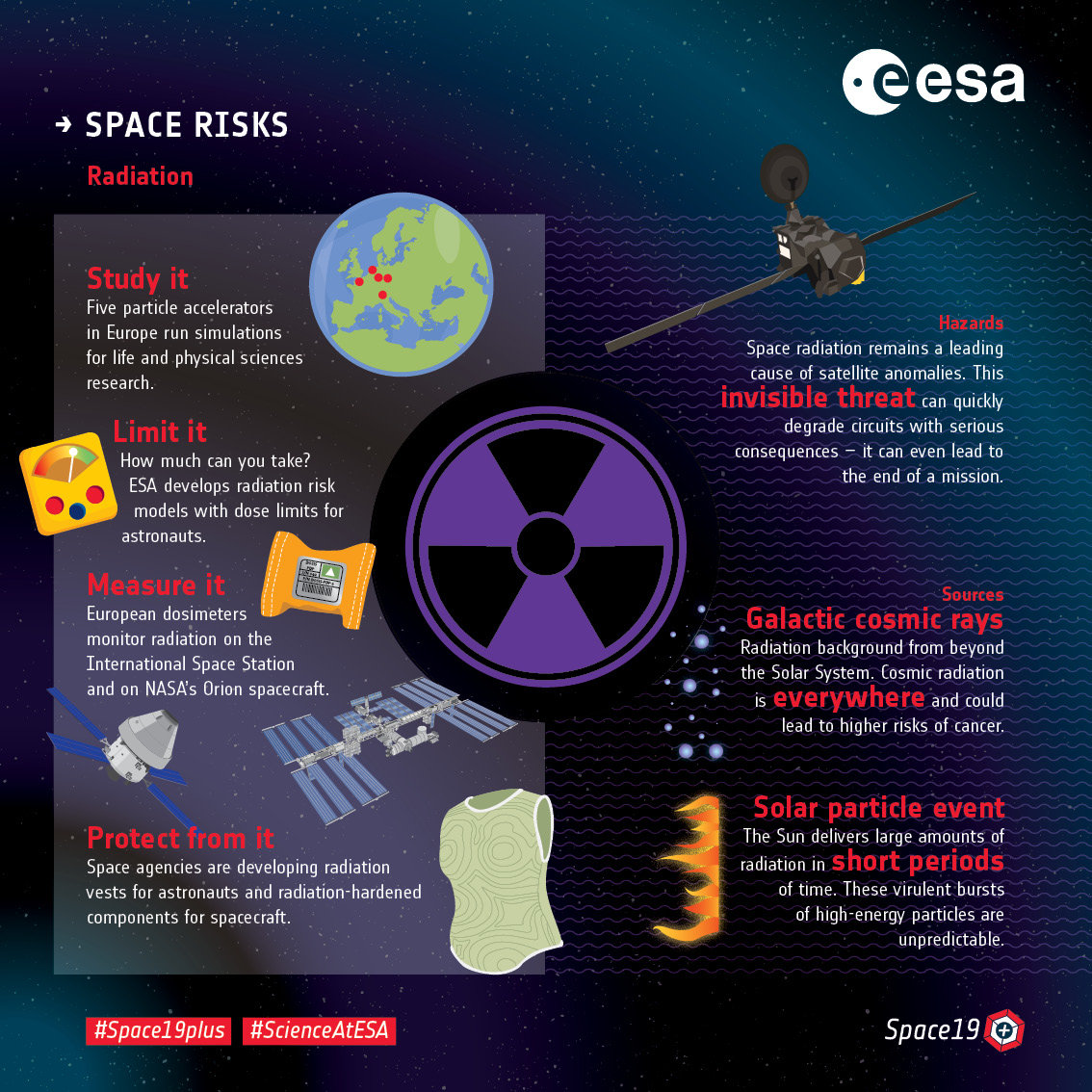Exposure to Galactic Cosmic Rays (GCR) and Solar Particle Events (SPE) are generally acknowledged as the main health risk for human crews of exploratory-class space missions, and a potential showstopper for long-duration missions, such as Mars exploration. However, one can look at ways to tackle these uncertainties.
It is generally acknowledged that with the current technology the only effective countermeasure that can maintain the risk for astronauts within acceptable limits is passive shielding.
Unfortunately, passive shielding is also burdensome in space:
- The available shielding material on a spacecraft is limited by mass constraints.
- The shielding effectiveness becomes constant, or even decreases, because of the high penetration of the ions.
- The effectiveness per unit mass decreases by increasing the shielding mass, and requires the development and test of new, spaceflight-qualified light material for radiation shielding.
Located at GSI, in Germany, the SIS18 is currently the only machine in Europe appropriate for ground-based radiobiology programs at high-energy. However, its exploitability is insufficient when it comes to addressing the many research questions posed by exposure to high-energy heavy ions, especially the occurrence of non-cancer effects, such as damage to the cardiovascular system or to the central nervous system.
As part of HEARTS, the new GCR/SPE simulator at GSI will allow testing with a full GCR spectrum that can be tuned to simulate diverse mission scenarios (e.g. deep-space, lunar base or Mars surface).
Therefore, within HEARTS there is the extraordinary opportunity to create a facility for fast and quantitative testing of shielding materials to be flown to mitigate radiation damage. This can then also be experimentally verified by performing dedicated radiobiology experiments using the GCR/SPE simulator.

